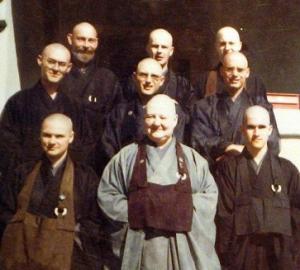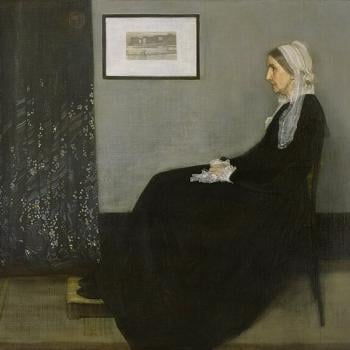I’ve been invited to give a talk.
I’m invited mostly because I’m a Zen priest, author, & meditation teacher, and maybe someone of a certain age and presumably with some actually useful experiences to draw upon. But that said I’ve been offered a couple of directions to go. One was to explore how I occupy two spiritual traditions, or, probably, how two spiritual traditions have a place in my heart. They meant that Zen Buddhism, but also Unitarian Universalism – a tradition I’ve been involved within for thirty-odd years and which I have served as a minister for twenty-five. Actually now a bit more than that.
It opened some interesting questions for me. Probably not what I would want to explore in that specific context, but, it did charge my thoughts. And, maybe has helped me in my constant refining of what my faith actually is.
Faith as in that in which I put my confidence. Personally I am big on examining one’s faith. An ongoing project for me, actually. Making the whole thing a bit more of a verb, I guess, than a noun.
I was thinking at first how the principal problem in that invitation is to what degree one can I actually say my Unitarian Universalism is a “spiritual tradition.” Unitarian Universalism has no creedal center – beyond, that is, a historical connection to Unitarian and Universalist Christianity, as well as a historical privileging of rationality within religion. But, beyond that and a Protestant cultural style it does not have an authoritative theological core. Nothing one must adhere to in order to belong.
So, spiritual tradition? Well, there is a very interesting assertion within contemporary Unitarian Universalism about the preciousness of individuals and how we are all bound up within “an interdependent web” in the Association’s statement of principles and purposes. Digging a bit we can see how this is rooted in a presumed if not stated naturalist approach to religion that is itself inspired or intimately connected to a rationalist inclination which has informed the tradition from, well, just about forever.
But, it’s also underscored and repeated constantly that the principles are not creedal. Rather they are the product of an attempt to survey the generality of view among the community at this moment in time. I believe it might be worthwhile digging into what that can mean. And, actually, I’ve spent time looking at that question specifically through the lens of my Zen Buddhism.
But that it is not binding for membership is a most important point. One can genuinely argue, and I’m inclined to agree that theologically speaking Unitarian Universalism is more a family of people with diverse theologies bound together by covenants of presence. Worth unpacking.
Ultimately, while there are no explicit beliefs one can name within Unitarian Universalism, there are some theological principles underlying the tradition, specifically a rationalist approach, a certain sense of wonder at the world which sparks a “spiritual” inclination, and a Euro-centric Protestant style of public gathering, undergirded by that fascinating intuition about interdependence.
Theologically, often say I am a Zen Buddhist, if one with a naturalist and rationalist inclination.
That continues to feel accurate.
I certainly can speak more easily to the spiritual assertions, the theology of my Zen Buddhism. Yes, yes, there is no “theo” in this Buddhist theology, certainly not explicitly, not in the way generally understood by most theists – but, theology is a term of art that speaks to how we organize our thinking around that realm of concerns we call spiritual, or, while perhaps falling out of popularity in the moment, religion. While there are no enforcers of religious standards within Buddhism, well, none that everyone acknowledges, there are those “three marks” and the “two truths” which are amazing theological assertions, summary statements that describe the common faith. And which I hold.
Those three marks of existence are central. First, everything is impermanent, the technical term is anicca. I find this self-evident. Second, there is no special substance to any thing, the technical term is anatta. Not so immediately obvious to people considering the animating principles of our being, that sense of an “I.” But, with close examination, it becomes obvious a permanent and abiding self is pretty elusive. And, it is an axiomatic assertion of Buddhism that there is no abiding self. And then with, the third assertion: that that this flux of rising and falling is experienced as dis-ease. The technical term is dukkha. I’ve seen this experience also translated as suffering, longing, and angst.
I think these assertions are true.
The Zen part of the equation are the two truths of the relative and the absolute. Classically the relative is the phenomenal world, while the absolute is the “higher” truth of emptiness – that lack of abiding substance within the play of causality. There is an inclination to valorize the empty, to give it the substance that is lacking in things. I’ve seen this emptiness being described as God. I’ve used that language myself. But, one has to be very careful when doing so. And, Zen, offers the pointers into both why and how. The heart of the Zen approach is contained in that simple phrase in the Heart Sutra: Form is emptiness. Emptiness is form.
Now, I bring a naturalistic and a sense that privileges rationality to the table, as well. And I need to be aware of this. That, and my natal Christianity, which at this point can be reduced to a deep connection to the metaphors and tropes derived from the Bible and some Christian traditions. I like to say I dream of Jesus and the Marys. And no doubt there is some influence from these things in my engagement with Zen and Buddhism. But, I believe it fair to say mostly it is with that naturalistic sense and that privileging of rationality, oh, I do like when people say something is true that it can be shown to be so.
Here East and West meet within my heart.
Here we see, here we find how we live in a world where everything is rising and falling, created out of each other, changing, mutating, where no moment can be said to be the permanent once and for all. Here we experience a sense of dissatisfaction. It’s as if we’re always tottering at the edge. And, of course, we are. This is the dukkha of classical Buddhism. Me, I’ve come to start calling this the buzz. It is the hum of the universe in play. For us as human beings it is generally an unpleasant thing. It’s like the experience of falling. In much of traditional Buddhism dukkha is the sadness of the whole universe. Here I slightly depart from the tradition. I think the negative of it is a uniquely human encounter. Most species do not seem to experience existential angst, a noticing of the emptiness of things as something bad – rather they are little moments of awareness that rise in the universe. The why of this is a human problem. Uniquely our dilemma.
However, it is also our human ability to see beyond the hurt. It seems to have two steps to it. The first is to experience complete the insubstantiality of things, including us. This is an experience of emptiness. Around the edges it can be terribly frightening – it is an experience of the emptiness of of our self. But, fully turned toward, it is liberating. It is a learning to fall. And, there’s a second step, and that’s the Heart Sutra teaching: form is emptiness, emptiness is form. Here we no longer privilege one way of being over the other, they are one, or, perhaps and it is usually framed as neither one nor two.
This is the great way. Its expressions shift in every encounter.
And, me, I’m living in one now. As are all of us who encounter the path in the West. And, of course it goes both ways. A great feedback loop where we are each enriching the other.
And this, all of it, East meeting West, Zen Buddhism in dialogue with the great West. All of it.
Not one. Not two.
Just this.
Holy now…













